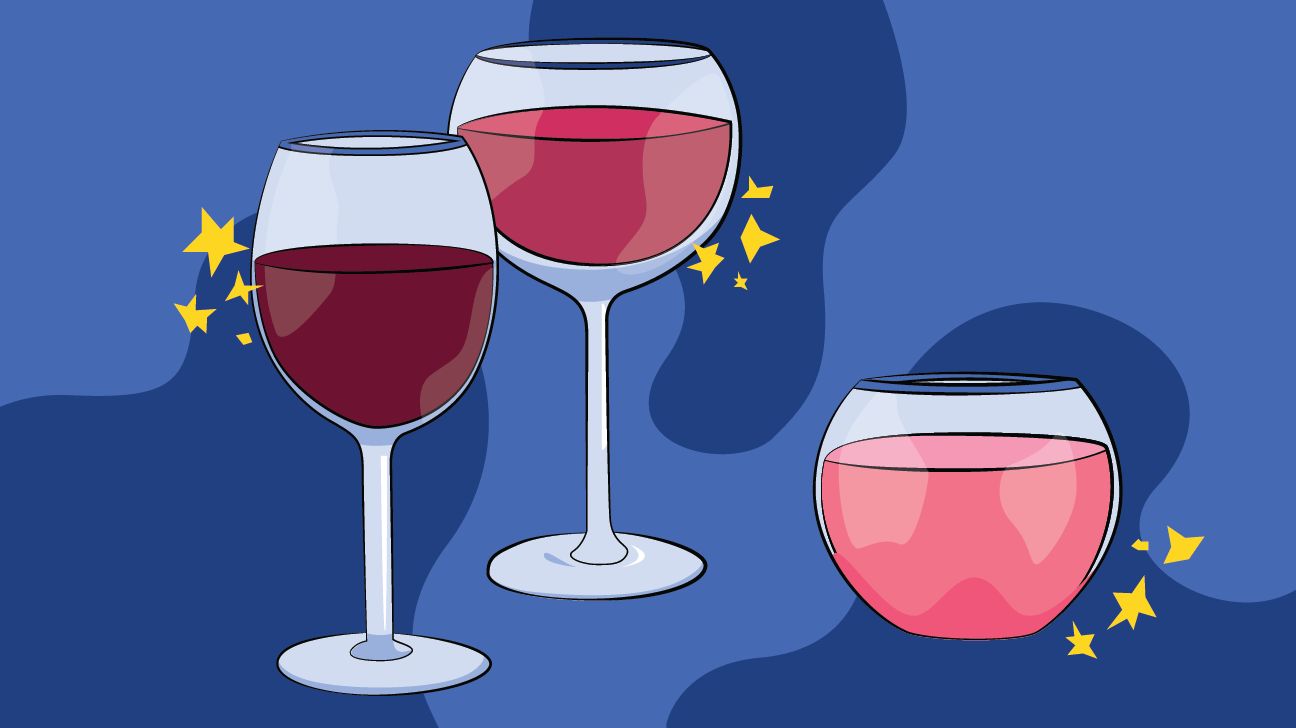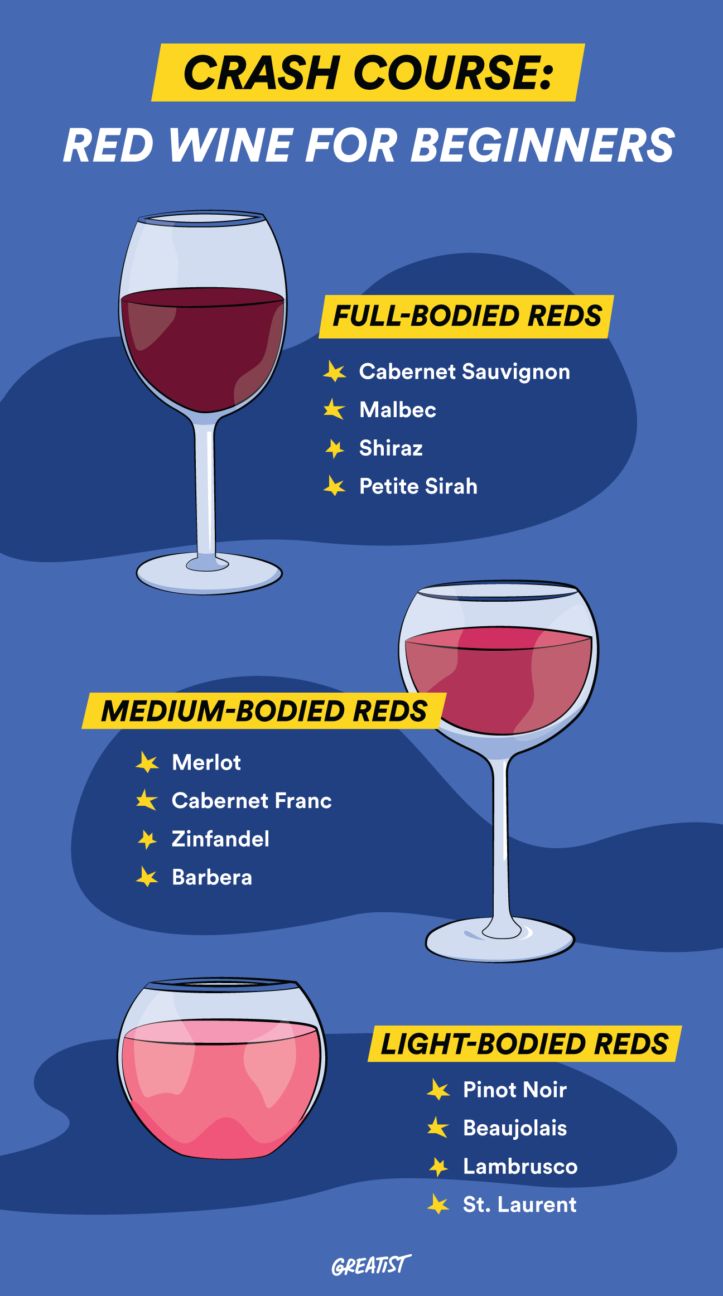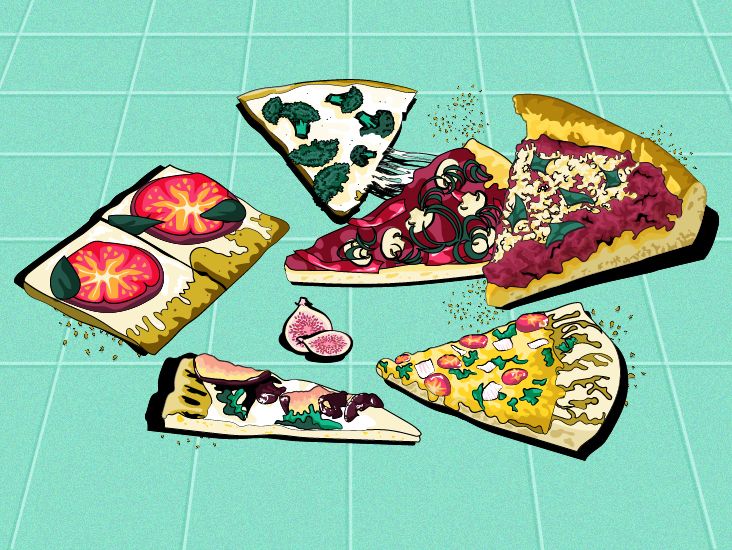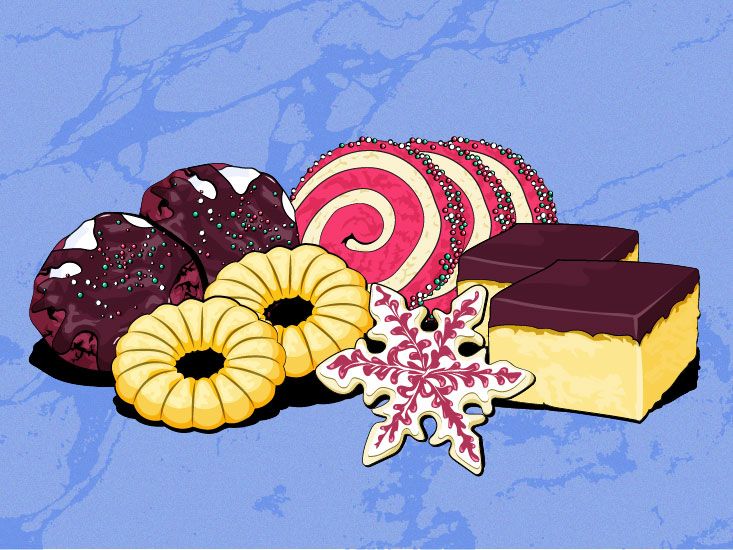
Wine (especially red wine) is an acquired taste. When you’re not sure what to look for, seeking out the *right* bottle of red can seem especially intimidating — especially with wine buffs tossing around chewy words like viscosity (liquid consistency) and tannins (bitterness).
But don’t let fancy lingo scare you from the exceptional tasting journey that is rouge wine! There are tons of different red grape varietals out there, but for simplicity’s sake, just know that red wine is often classified by “body type” — meaning, how heavy the wine feels in your mouth.
Whether you’re seeking a red that’s light-bodied, full-bodied, or somewhere in the middle, start here with 12 great varietals categorized by body type. Then, get ready to pop corks and drop knowledge at your next dinner party with some mouth-watering food pairing suggestions.
Lightweight and refreshing, these are your “gateway reds” — perfect for white wine drinkers looking to cross the bridge over to Team Rouge. Light-bodied reds can be drunk alone, but also pair really well with food thanks to their lower tannins.
- Pinot Noir: This light, dry red — aka the “Sideways” wine — has higher acidity and big aromatics.The grape is grown everywhere from Burgundy to Sonoma to Oregon’s Willamette Valley, and each place’s Pinot Noir expresses itself a bit differently. A typical flavor profile, however, is red-fruit-forward with earthy and herby notes. The price tag on a good Pinot Noir generally runs a bit higher than some other varietals, but passionate PN lovers will tell you it’s worth the spend.
- Beaujolais: Beaujolais reds are made with the Gamay grape and share a name with the region of France they come from. These young wines (aka, recently bottled) are staples at Thanksgiving feasts, since their red berry flavors and high acidity pair flawlessly with turkey, gravy, squash, cranberry sauce, you name it. But really, feel free to Beaujolais all year long with any roasted white meat dish or cheese board.
- Lambrusco: It used to have a bad rep for being too sweet and cheap, but this Italian-born red is currently having a renaissance, making it a wine worth sipping. Lambrusco is usually frizzante style (aka, slightly fizzy) with a touch of sweetness, offering a perfect balance to Friday night food like sausage pizza, burgers, and pulled pork.
- St. Laurent: This light (and underrated!) red hails from Austria. With flavors of berries, cherries, and baking spices, St. Laurent is like a darker, slightly paunchier version of Pinot Noir. It’s the perfect wine to bring to a BBQ and pair with rich, smoky-sweet flavors, or sip along side a cured meat and cheese platter.
These would be Goldilocks’s favorite wines: not too light, not too bold, they’re just right. Medium-bodied reds showcase a little bit more tannins than lighter wines, but still don’t hit you over the head with complex structure or intense flavor.
- Merlot: Think: Cherry + chocolate + soft tannins. Merlot is an easy-drinking, versatile red that goes well with almost any food, even a simple Monday night roast chicken thighs and veggies.
- Cabernet Franc: This black-skinned French grape loves blending with Merlot and Cabernet Sauvignon to create world-renowned Bordeaux wines, but Cab Franc also makes a great complex wine on its own. If you need a date for spaghetti-and-meatball night, look no further — Cabernet Franc has the herbaceousness, green pepper flavors, and higher acidity that beg to canoodle with tomato sauce.
- Zinfandel: Red Zinny is renowned for its jammy, candied fruit flavors and spicy tobacco finish. With mid-range tannins and high acidity (plus high alcohol content) it’s bold without being heavy. Partner it with a sweet-’n-savory dish like curry or tangy BBQ ribs.
- Barbera: This unsung hero fromNorthern Italy is a total people pleaser, somehow managing to taste rich and juicy at the same time. Barbera is meant to be drunk young (translation: don’t age it and pop that bottle right the heck now!) and features vibrant fruit flavors and natural acidity, perfect to sip alongside lamb shanks or mushroom risotto. It’s also very affordable.
To Decant… or Not to Decant?
Which wines should you decant, and why? Decanting intimidates people when it really shouldn’t, so here are some loose rules:
- Old red wines, to separate any sediment that’s formed over the years
- Big red wines, to soften and round out the high tannins
- Cheap wines, to help them taste better
- Any wine you want, because decanters look pretty!
To decant your wine of choice, simply pour the wine from its bottle into your decanting vessel (it can be a fancy one, or any empty glass container really); then, let it sit there and come in contact with oxygen for 15 to 20 minutes. The flavors and aromas should evolve in the time before you drink it!
Full-bodied reds have the highest tannins (and often, highest alcohol content), creating a feeling of weight on the palette. Wines like these are best for pairing with rich, substantial foods because they’re bold enough to hold their own while still letting their flavors shine through.
- Cabernet Sauvignon: Cab (a natural blend of Cabernet Franc and Sauvignon Blanc) is the red wine king. It’s grown and enjoyed all over the world and the first-choice wine to accompany steak dinner — Cab’s big body, bold flavors, and mile-long finish can match the meat and marinade like none other.
- Malbec: In the past 10 to 15 years, Argentina’s pride and joy has made a name for itself in America as the go-to, crowd-favorite red that loves food. Malbec is a dark-fruit-forward wine with a little spicy finish (kind of like a fuller, rough-around-the-edges Merlot). Serve it with beef empanadas and friends you didn’t even know you had will come flocking.
- Shiraz: Shiraz is the new-world (typically Australian) take on the old-world Syrah from France. Each sip is a powerful fruit-and-spice blast to the mouth, with high tannins that help it age well. With food, Shiraz has the body to stand up to intense flavors — from a fatty blue cheese burger to spice-laden grilled chicken. Added perk: Shiraz boasts one of the highest levels of antioxidants. (Yay for healthy drinking!)
- Petite Sirah: It’s not just a “petite” version of Syrah; it’s a unique grape variety. Grown mainly in California, Petite Sirah is a very tannic red with flavors of blueberries, black pepper, cocoa, and even crushed rocks. Try testing your patience and decanting it for a few hours, letting the flavors and aromas evolve. Pairing with food? Go with a bold but not sweet dish like stuffed peppers.




